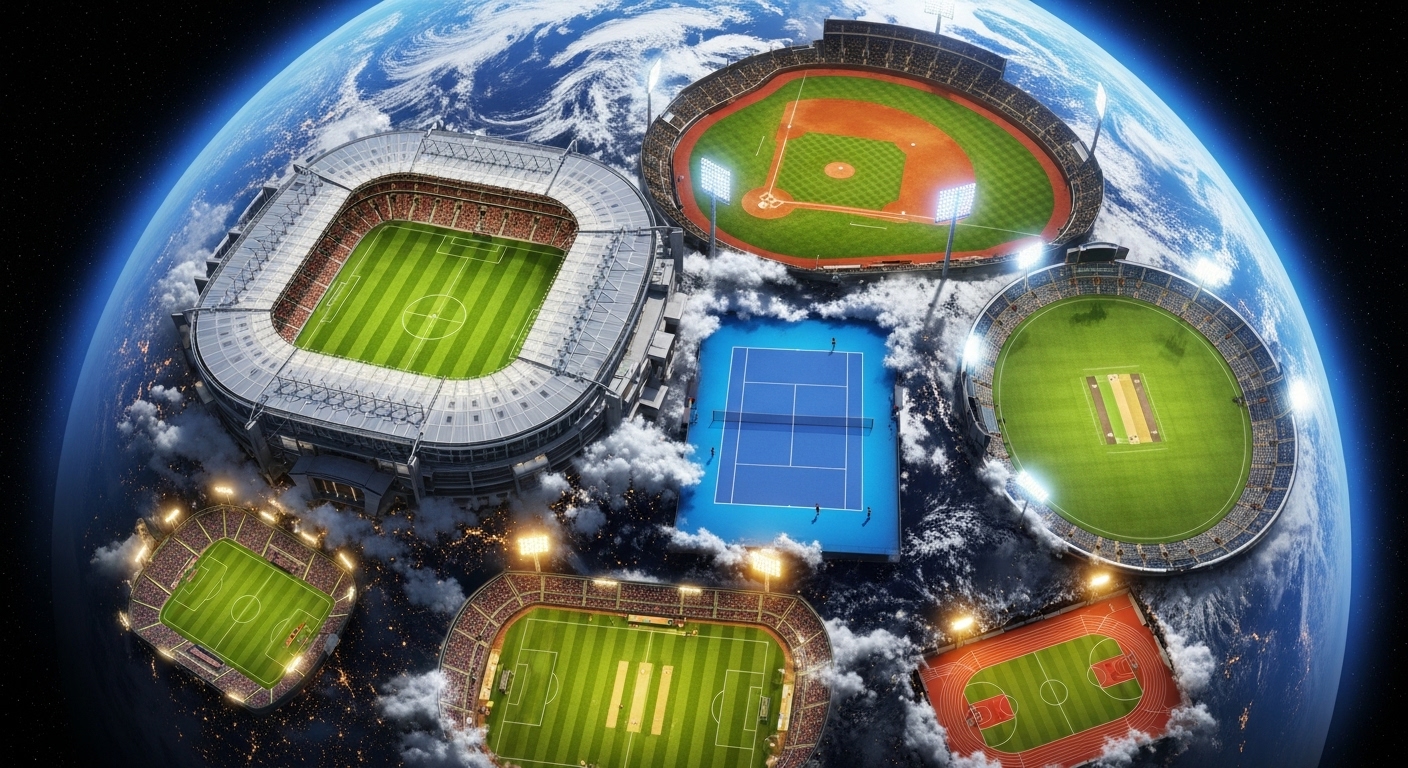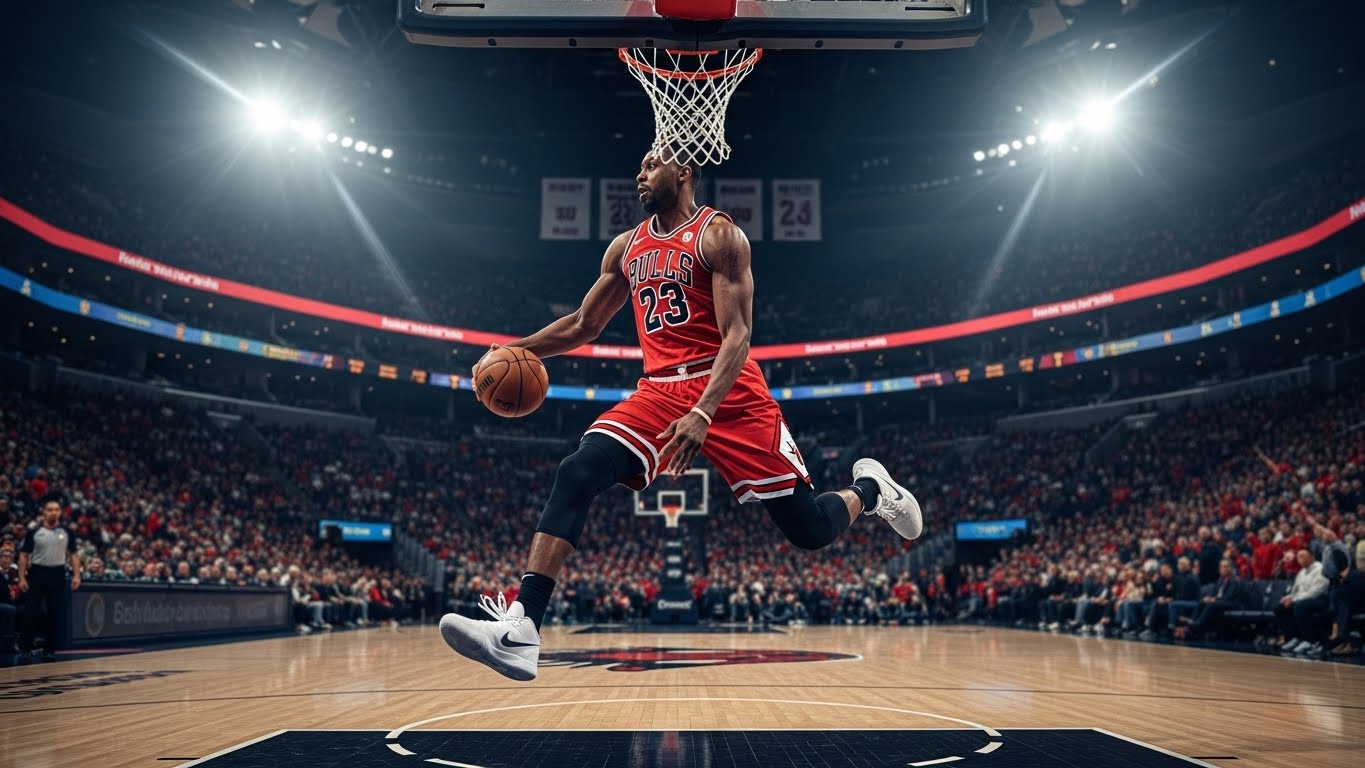Sports have been an inseparable part of human civilization for thousands of years. From the ancient Olympic Games of Greece to the global phenomenon of modern football, the journey of sports reflects humanity’s passion for competition, physical excellence, and unity. Sports are far more than games; they are cultural expressions, economic engines, and powerful tools for social change. In today’s modern era, sports have transcended their traditional boundaries, influencing everything from technology to politics, health, and identity.
This blog explores how sports have evolved through time, the impact they have on society, the challenges they face, and the future that awaits this universal passion.
The Ancient Roots of Sports
Sports began as a natural extension of human activity. Early humans relied on physical strength and agility to survive, and many of these survival skills evolved into competitive games. In ancient civilizations such as Egypt, China, Greece, and Rome, organized sports became part of social and religious rituals. Wrestling, running, archery, and javelin throwing were not just pastimes but symbols of honor and strength.
The Greeks formalized these competitions through the Olympic Games, which began in 776 BCE. The Olympics celebrated the human body’s physical potential and promoted unity among Greek city-states. Similarly, the Romans viewed sports through the lens of entertainment, often organizing gladiator battles and chariot races that drew massive crowds. In ancient China, martial arts and archery competitions reflected discipline and moral training rather than mere physical prowess.
These early examples show that sports have always carried deeper meanings — they were never only about winning or losing but about identity, culture, and community.
The Birth of Modern Sports
The modern concept of sports began to take shape during the 19th century, particularly in Europe. The Industrial Revolution gave rise to urban centers where people had limited open spaces and needed organized activities for recreation. Educational institutions like English public schools played a key role in codifying rules for games such as football, cricket, and rugby. These sports quickly spread to other parts of the world through trade, colonization, and education.
The establishment of international governing bodies, such as the International Olympic Committee (IOC) in 1894 and FIFA in 1904, marked the beginning of global sports as we know them today. The revival of the Olympic Games in 1896 was a turning point, symbolizing not only athletic excellence but also global cooperation and peace.
The Rise of Mass Spectator Sports
As the 20th century progressed, sports transformed from local entertainment into global spectacles. The invention of the radio, followed by television, revolutionized how fans experienced games. No longer limited to stadium attendance, audiences around the world could now witness events live from their homes. Iconic moments, such as Muhammad Ali’s fights, Pelé’s goals, and Usain Bolt’s lightning sprints, became shared global experiences.
Sports heroes became cultural icons, inspiring millions beyond the boundaries of the field. They represented hope, resilience, and ambition. With this rise came commercialization. Sponsors, broadcasters, and corporations recognized the immense marketing potential of sports. By mid-century, advertising had become deeply intertwined with sporting events. The Super Bowl in the United States, for instance, became as much about its commercials as about the game itself.
This era also saw the professionalization of sports. Athletes who were once amateurs began earning salaries, endorsements, and fame. Leagues and tournaments evolved into multi-billion-dollar industries, with clubs functioning as global brands.
The Globalization of Sports
Sports today are among the most powerful forces of globalization. Football is played and followed in nearly every corner of the world, basketball has become an international language, and cricket has united nations across continents. Major events such as the FIFA World Cup, the Olympics, and the NBA Finals attract viewers in the billions, bringing together people of diverse cultures and backgrounds.
Globalization has also created opportunities for talent mobility. Athletes now compete in foreign leagues, exposing themselves to new styles, training techniques, and cultures. This cross-pollination has elevated the quality of play across all disciplines. For instance, the English Premier League features players from over 100 countries, making it a melting pot of cultures and tactics.
However, globalization has not come without its controversies. The commercial interests of large organizations sometimes overshadow the spirit of the game. The concentration of wealth in elite clubs and federations has raised questions about fairness, sustainability, and inclusivity.
The Role of Technology in Modern Sports
Technology has become one of the most transformative elements in the modern sports landscape. From instant replay systems to data analytics and wearable sensors, technology has changed how athletes train, perform, and recover.
In performance training, advanced equipment such as motion-capture cameras and AI-based analysis helps coaches identify even the smallest biomechanical inefficiencies. Nutrition and recovery have become science-driven, with customized meal plans, cryotherapy, and precision monitoring ensuring peak physical condition.
On the spectator side, technology has enhanced engagement. Virtual reality allows fans to experience matches as if they were in the stadium, and social media gives them direct access to their favorite players. Fantasy leagues, esports, and digital broadcasts have blurred the line between sport and entertainment.
Technology has also improved fairness in competition. Tools like goal-line technology in football and Hawk-Eye in tennis have reduced human error, ensuring more accurate outcomes. Yet, debates continue about how much technology should influence the human spirit of sports.
Sports and Society: A Mirror of Change
Sports are more than physical contests; they are reflections of societal values, struggles, and aspirations. Throughout history, sports have played a key role in challenging social norms and advancing equality.
In the mid-20th century, sports became a stage for civil rights movements. Athletes like Jackie Robinson broke racial barriers in baseball, while Muhammad Ali used his platform to speak out against war and discrimination. The raised fists of Tommie Smith and John Carlos at the 1968 Olympics remain one of the most powerful symbols of protest in sports history.
Gender equality has also been an ongoing battle. Women’s sports were long undervalued, but the tide has shifted in recent decades. Icons like Serena Williams, Megan Rapinoe, and Simone Biles have not only dominated their fields but also advocated for equal pay, respect, and recognition. The growth of events like the Women’s World Cup has proven that women’s sports have just as much appeal and importance as men’s.
Moreover, sports have been vital in promoting inclusivity for people with disabilities. The Paralympic Games, founded in 1960, have given athletes with disabilities a global platform to showcase their abilities and inspire millions.
The Business and Economics of Sports
Modern sports are deeply intertwined with economics. What began as amateur competitions have become massive commercial enterprises. Clubs, franchises, and athletes are now brands with their own merchandising, endorsements, and media rights.
The financial ecosystem of sports includes ticket sales, broadcasting rights, sponsorships, and digital engagement. The English Premier League, NBA, and NFL generate billions annually, not only supporting players but also providing employment to thousands in marketing, logistics, media, and tourism.
At the same time, sports have become a tool for economic development. Hosting mega-events like the Olympics or World Cup can boost infrastructure and tourism, although they also pose financial risks. While cities like Barcelona have thrived post-Olympics, others have struggled with debt and underused facilities.
The economic gap between rich and poor clubs remains a concern. Smaller teams often struggle to compete financially, leading to uneven competitions. This has reignited debates about salary caps, revenue sharing, and the true spirit of fair play.
The Psychological Impact of Sports
Sports are not just about physical performance; they also shape the mind. Athletes require immense mental discipline, resilience, and focus to perform under pressure. Sports psychology has emerged as a crucial discipline that addresses motivation, confidence, and mental health.
For fans, sports can be both an emotional escape and a source of identity. Supporting a team fosters belonging and community, yet it can also lead to obsession and tribalism. The emotional highs and lows of victory and defeat mirror life itself, teaching valuable lessons in perseverance and humility.
In recent years, the conversation around mental health in sports has gained momentum. Prominent athletes like Naomi Osaka and Michael Phelps have spoken openly about anxiety and depression, breaking the stigma around seeking help. This shift marks a healthier approach to viewing athletes as humans first, performers second.
The Influence of Sports on Youth and Education
Sports play an essential role in shaping young minds. Beyond fitness, they teach discipline, teamwork, leadership, and the importance of hard work. Educational institutions across the world have recognized the value of integrating sports into academic life.
For children, playing sports builds social skills, improves concentration, and promotes healthy lifestyles. It also provides a positive outlet for energy and emotion. Many of life’s lessons — cooperation, strategy, empathy, and resilience — are learned on the field.
However, the growing pressure of competition at a young age has also sparked concern. Some parents and coaches push children too hard, leading to burnout or injury. Balancing ambition with enjoyment is vital to ensure that sports remain a source of growth, not stress.
The Role of Media and Celebrity Culture
Modern athletes are no longer just competitors; they are global celebrities with enormous influence. Social media platforms have allowed athletes to control their own narratives, connect with fans directly, and use their fame for social causes.
Media coverage has amplified every aspect of sports — from triumphs to controversies. While this visibility increases engagement, it also exposes athletes to intense scrutiny. The rise of sports journalism, podcasts, and documentaries has deepened public understanding of the game but also blurred the line between reporting and entertainment.
Athletes have leveraged their fame to build personal brands, businesses, and philanthropic initiatives. Figures like LeBron James and Cristiano Ronaldo are not only among the best in their sports but also influential figures in global culture.
Sports as a Tool for Peace and Diplomacy
Few things unite nations like sports. Throughout history, sporting events have acted as bridges between conflicting cultures. The concept of “sports diplomacy” uses competition to promote dialogue, peace, and cooperation.
During the Cold War, sporting encounters between the United States and the Soviet Union symbolized ideological battles, but they also kept communication open. The famous “Ping-Pong Diplomacy” of the 1970s between the US and China is a perfect example of how sports can ease political tensions.
Today, organizations and charities use sports to foster unity in conflict zones, promote education, and empower marginalized communities. Football clubs and Olympic committees have developed programs to use sports for social good, proving that games can change lives beyond the scoreboard.
Environmental Awareness in Sports
As climate change becomes one of the greatest challenges of our time, the sports industry is taking steps toward sustainability. Large-scale events generate significant waste and emissions, prompting leagues and organizers to adopt eco-friendly practices.
Stadiums are being built with renewable energy systems, recycling programs, and green transportation options. Athletes themselves are using their platforms to advocate for environmental responsibility. Sports, with their global reach, can inspire millions to take action for the planet.
The Future of Sports
The future of sports is likely to be more interconnected, digital, and inclusive. Esports, once seen as a niche interest, has become a global industry attracting millions of viewers and professional gamers. Virtual competitions, AI-assisted training, and augmented reality experiences will further blur the boundaries between physical and digital play.
Inclusivity will also shape the next era. As gender barriers continue to fall, and as awareness of accessibility grows, sports will become more representative of society as a whole. The focus will shift from exclusivity to participation, emphasizing that sports belong to everyone, regardless of age, background, or ability.
Technology may change how sports look, but the essence — the pursuit of excellence, fair play, and human connection — will remain timeless.
Conclusion: Sports as a Universal Language
Sports transcend borders, languages, and cultures. They are a reflection of human potential and perseverance, a field where unity triumphs over division. Whether it’s a child kicking a ball on a dusty street or an athlete standing on the Olympic podium, the spirit of sports connects us all.
In the modern era, sports continue to evolve, influencing nearly every aspect of life — from health to economy, from education to diplomacy. They inspire dreams, forge identities, and remind us that, in a divided world, the joy of the game still has the power to bring humanity together.



